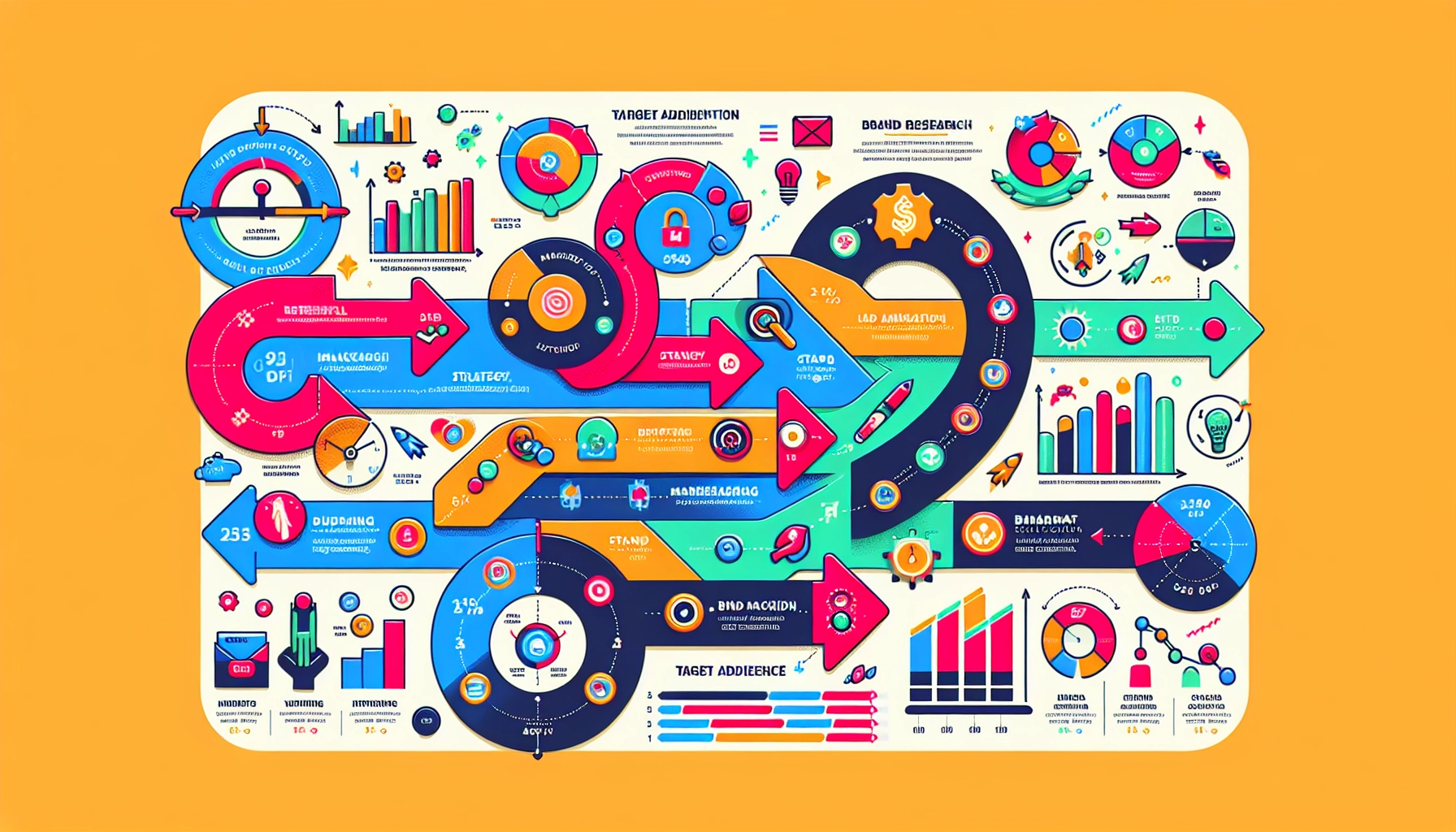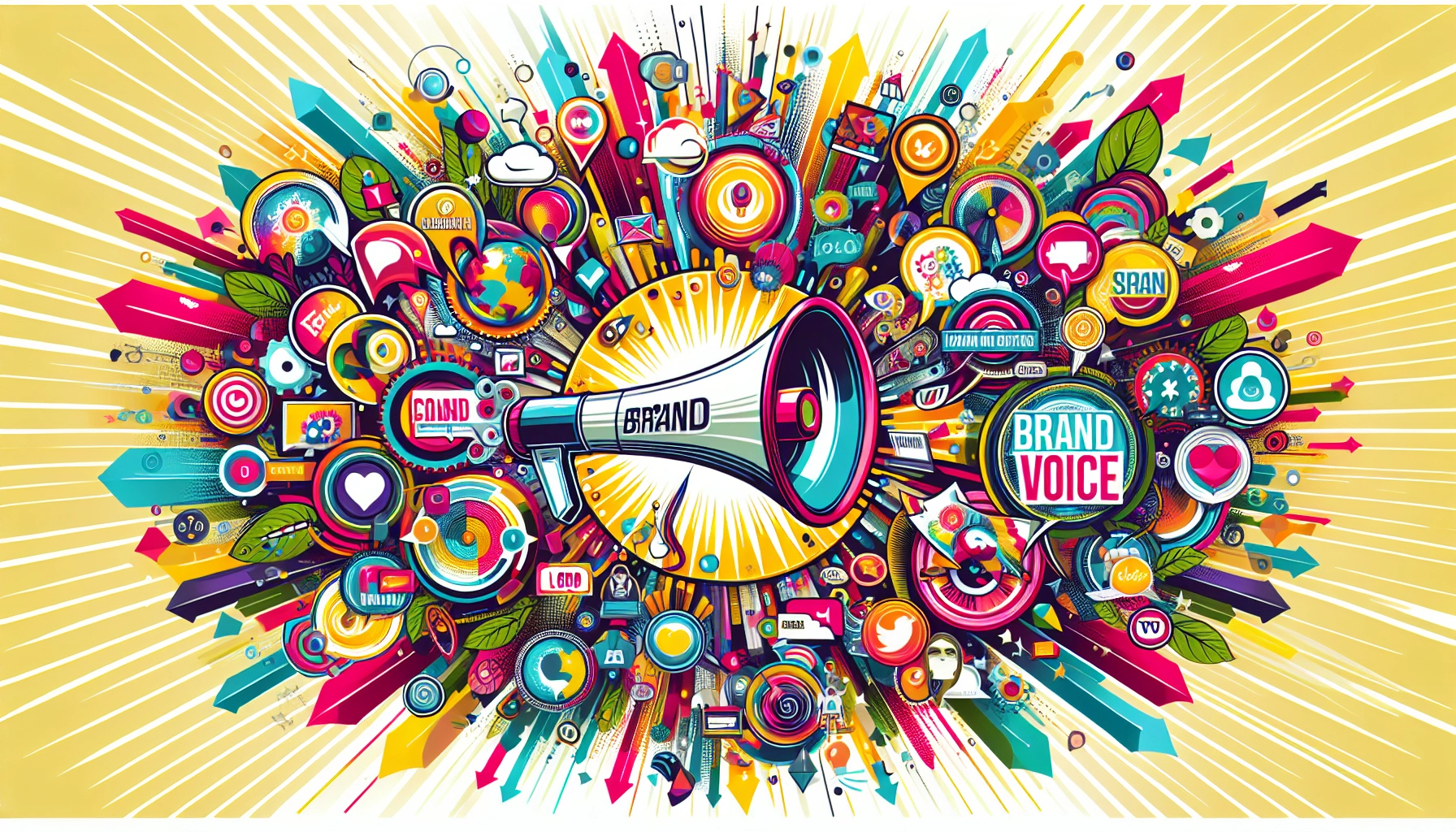Table of Contents[Hide][Show]
- Key Takeaways
- Summary
Frequently Asked Questions+−
- What is the difference between brand marketing and product marketing?
- How do you establish a strong brand identity?
- What are some key performance indicators (KPIs) for measuring brand marketing success?
- How can social media be leveraged for brand marketing?
- What are common pitfalls to avoid in brand marketing?
Looking to build a strong, memorable brand? Brand marketing is key. What is a brand marketing strategy? It is a long-term program of communication that conveys a brand’s values, personality, and mission to consumers. It focuses on creating an identity and emotional connection with your audience rather than just promoting products. This article highlights the top strategies for effective brand marketing in 2025 to help you strengthen your brand and achieve long-term growth.
Key Takeaways
- Brand marketing focuses on creating a unique identity and emotional connections with consumers, driving loyalty and perceived value over time.
- A successful brand strategy involves understanding the target audience, setting clear marketing goals, and establishing a compelling brand story and identity.
- Consistency in messaging, visual identity, and authenticity are crucial for successful brand marketing, while pitfalls like inauthenticity and trend-chasing can harm a company’s brand reputation.
Understanding Brand Marketing

Brand marketing is a strategic process that creates a brand’s identity for a business and builds connections and loyalty with customers. Unlike product marketing, which focuses on individual products, brand marketing shapes perceptions and creates an emotional connection with the audience. This emotional connection can lead to higher customer loyalty and even allow businesses with inferior products to win customers and charge more.
Effective brand marketing growth increases perceived value and customer lifetime value. A good, effective brand marketing strategy is long-term customer relationships, not just short-term impact. This relationship is based on trust, recognition, and perceived brand value. Brand marketing is an ongoing effort to promote the brand and create a lasting customer impression.
Brand marketing campaigns give companies a brand that customers can relate to and remember. This is more than a logo or tagline; the company’s DNA and desired perception contribute to its brand equity, brand recognition, and marketing efforts.
Good campaigns tell this story across all channels so the brand story resonates with the audience.
Defining Brand Marketing
Brand marketing is about the overall brand, reputation, trust, and loyalty, not products. It’s an asset, gives you identity memorability, and encourages consumer engagement. A strong brand can add massive value to a business by attracting customers and improving financials.
It shapes consumer perception and loyalty through emotions and reactions.
Branding vs. Product Marketing
Brand marketing is about values and brand image; product marketing is about specific products. The main difference is in the objectives: branding is about creating a lasting identity and emotional connection with the target audience, while product marketing is about sales and features of individual products.
Get this right, and you’ll have a strategy that matches your long-term business goals.
Creating a Successful Brand Marketing Strategy

A strong brand marketing strategy starts with knowing your target audience. That means defining your unique brand values and what sets you apart from the competition.
Then, research and analysis of competitors’ brand positioning and customer engagement will give you valuable insights to build on your brand. Clear goals will help you raise brand awareness and consistency across all activities.
Have a strategy before you launch products or big campaigns so everything is aligned and working.
Establishing Brand Identity
Getting a brand identity means getting in your target audience’s heads. The mission statement is the organization’s purpose and passion, without mentioning specific products or services. Brand identity is the personality of the business and the promise to the customer.
The company name, tagline, logo, and color palette are key bits. Defining your brand’s unique bits makes you different from the competition. Looking at the competition helps you find the differences.
Knowing your target audience and what they need is key to shaping brand identity.
Setting Brand Marketing Goals
Brand marketing is about reputation, equity, trust, and loyalty. Once you have your brand defined, you need to set goals. These should be short-term and long-term.
Key performance indicators (KPIs) measure campaign success. They need to be reviewed regularly to determine what’s working.
Developing a Brand Story
A brand story concerns identity, values and philosophy, origin, problems solved, and customer desires. A good brand story tells the brand’s unique experiences and values and creates an emotional connection with the customer.
Key Components of Brand Marketing

So, a brand identity is made up of several key parts—brand voice and messaging, visual elements, content marketing, and marketing branding. Brand awareness is key to any brand.
Storytelling, visuals, and consistent messaging in brand marketing create emotional connections, which is brand loyalty. Brand loyalty is the brand’s personality, story, and values.
Brand Voice and Messaging
The brand voice shapes the messaging and how a brand speaks to the world. Tone and vocabulary are the key elements of a brand’s voice. Messaging should align with values and mission to be cohesive and talk to the customer.
Consistent communication makes a brand more of itself and builds emotional connections. Consistent use of brand assets in paid and organic content keeps the brand intact.
Visual Elements and Brand Style Guide
A professional look and feel, including logo and color scheme, is credible and attracts your target audience. Consistent visual branding across platforms builds trust with your audience.
Brand guidelines should cover visual assets in marketing materials. A brand style guide governs the visual assets.
Visual assets are logos, color palettes, typography, and iconography. A brand style guide keeps everything looking and saying the same.
Content Marketing
Content marketing is the voice of the brand. It’s how you distribute different types of content. A strong brand has admiration, memory, and preference over the competition.
Trust and existing relationships are the key to customer loyalty. SEO is how you get brand awareness organically so content reaches more people.
Multi-channel marketing is how you get more brand exposure and impact.
Implementing Brand Marketing Tactics
Marketing is a mix of everything and everywhere to build awareness and growth. Nike, Barbie, and Heinz have done it with clever strategies and audience insight in their campaigns.
Choosing the Right Marketing Channels
When choosing channels, you must consider brand positioning and target audience. Good channels for content are social media, paid ads, and email. Selecting the proper channels is key to reaching your audience and being seen.
Leveraging Social Media Platforms
Social media lets you talk to customers and make good things happen. Fundamental interactions on social media = brand loyalty and word of mouth.
Working with customer-based brand ambassadors = credibility and messaging.
Influencer and Ambassador Programs
Influencers increase brand visibility and credibility. They reach their audience and amplify. Influencer and ambassador programs build relationships and engage on social media.
Building Brand Loyalty
Building brand loyalty is a crucial aspect of brand marketing, as it enables businesses to retain customers and encourage repeat business. A loyal customer base can also be a powerful marketing tool, as satisfied customers are likelier to recommend a brand to others.
Fostering Customer Relationships
Fostering customer relationships is essential for building brand loyalty. This can be achieved through various means, such as:
- Providing Exceptional Customer Service: Going above and beyond in customer service can leave a lasting impression. When customers feel valued and heard after giving feedback, they are more likely to return and recommend your brand to others if they do not become an advocate.
- Offering Personalized Experiences: Tailoring your marketing efforts to meet your customer’s individual needs and preferences can create a more meaningful connection. Use data-driven insights to personalize communications and offers.
- Engaging with Customers on Social Media: Social media platforms offer a unique opportunity to interact with customers in real time. Responding to comments, sharing user-generated content, and conversing with your customers can build a sense of trust and community.
- Implementing Loyalty Programs: Rewarding repeat customers with exclusive offers, discounts, or points can incentivize continued patronage. Loyalty programs can also provide valuable data on customer preferences and behaviors.
- Collecting and Acting on Customer Feedback: Regularly seeking feedback and making improvements based on customer suggestions shows that you value their opinions. This can enhance customer satisfaction and loyalty.
Businesses can create a sense of trust and loyalty, leading to long-term customer retention by building strong relationships with customers.
Encouraging Brand Advocacy
Encouraging brand advocacy is another key aspect of building brand loyalty. Brand advocates are customers who are passionate about a brand and actively promote it to others. Businesses can encourage brand advocacy by:
Creating Engaging Content: Publish content that resonates with your target audience and encourages them to share it with their networks. This can include blog posts, videos, infographics, and more.
- Offering Incentives for Referrals and Reviews: Encourage satisfied customers to refer friends and family or leave positive reviews by offering incentives such as discounts, freebies, or exclusive access to new products.
- Recognizing and Rewarding Loyal Customers: Show appreciation for your loyal customers by publicly recognizing them or offering special rewards. This can strengthen their connection to your brand and motivate them to advocate for you.
- Providing Exclusive Experiences and Offers: Give your loyal customers access to exclusive events, early product releases, or special offers. This can make them feel valued and appreciated.
- Empowering Customers to Share Their Brand Experiences on Social Media: Encourage customers to share their positive experiences with your brand on social media. User-generated content can be a powerful tool for building brand awareness and credibility.
By encouraging brand advocacy, businesses can create a loyal community of customers who will help promote the brand and attract new customers.
Trends and Opportunities in Brand Marketing
The brand marketing landscape constantly evolves, with new trends and opportunities always emerging. Staying ahead of these trends can help businesses build a strong brand that resonates with customers and stands out in a competitive market.
Current Trends in Brand Marketing
- Personalization: With the rise of data-driven marketing, businesses can now personalize their marketing efforts to individual customers, creating a more tailored and relevant experience. Personalization can enhance customer satisfaction and loyalty by making customers feel understood and valued.
- Sustainability: Consumers increasingly prioritize sustainability and social responsibility, making it essential for businesses to incorporate these values into their brand marketing efforts. Brands that demonstrate a commitment to sustainability can attract environmentally conscious customers and build a positive reputation.
- Influencer Marketing: Influencer marketing continues to grow in popularity, with businesses partnering with social media influencers to reach new audiences and build brand awareness. Influencers can lend credibility to a brand and help it connect with its followers personally.
- Experiential Marketing: Experiential marketing involves creating immersive and memorable experiences for customers, which can help build brand loyalty and advocacy. Events, pop-up shops, and interactive campaigns can make a lasting impression and foster a deeper connection with the brand.
- Digital Transformation: The rise of digital technologies has transformed the way businesses market themselves, with a focus on digital channels such as social media, email, and content marketing. Embracing digital transformation can help companies to reach a wider audience and engage with customers innovatively.
By staying on top of these trends and opportunities, businesses can stay ahead of the competition and build a strong brand that resonates with customers.
Measuring Brand Marketing Success

Measuring success is about measuring metrics. Website traffic and social media followers measure brand awareness. Customer engagement metrics are social media interactions and email open rates.
Brand perception is about gathering insights through surveys and feedback—regular surveys track changes in brand perception and customer satisfaction. Repeat buys and retention rates measure customer loyalty.
Comparing to competitors gives you insight into branding. Financial metrics like ROI measure how branding impacts business results.
Selecting KPIs
KPIs are metrics of success in marketing. Check your KPIs to make sure your marketing is working. Google Analytics will give you the numbers.
Utilizing Analytics Tools
Tools give us insights into how people are responding to us. Hootsuite tracks our marketing. Social media monitoring tracks our brand.
Adjusting Strategies Based on Data
Monitoring social media is measuring customer sentiment and revisiting strategies as market changes. If goals are unmet, we may need to switch to new campaigns. Strong brands need ongoing maintenance to keep their image and effectiveness.
Engaging with customers regularly is key to understanding the brand. Follow up with customers after brand activity to improve.
Examples of Strong Brand Marketing

Good brand marketing gives us clues as to what makes a brand work. Nike’s ‘Just Do It’ campaign connects with people and creates an identity. Apple’s ‘Think Different’ campaign changed brand perception and loyalty. Dollar Shave Club’s marketing blew up the shaving industry with a subscription model.
Good marketing matters.
Nike – Just Do It
Just Do It! It is a masterclass in emotional storytelling. Athletes’ stories make Nike more relatable and connected. It’s designed to make you feel something and build brand identity and loyalty.
Nike puts its brand in competition by connecting with the audience.
Apple – Think Different
The ‘Think Different’ campaign challenges the norm and celebrates being different. This created colossal brand loyalty for Apple by speaking to the values and desires of its target market.
Innovate and be different, Apple became the tech and design leader.
Dollar Shave Club – Shaving Reimagined
Dollar Shave Club shows that strong branding can work even without new products. Their marketing had humor and substance, a viral video launch that got attention and spoke to men tired of expensive razors.
Dollar Shave Club used social media and YouTube to amplify its marketing and disrupt the shaving industry with a subscription model.
Common Pitfalls in Brand Marketing
While brand marketing can take you to the top, there are common traps to watch out for. One is inauthenticity, where brands greenwash pretend to be something they’re not.
Another is inconsistent branding, which erodes trust and professionalism. And trend chasing means you lose footing, prioritizing short-term gains over a solid and authentic self.
Inauthenticity
Inauthenticity in branding means misleading consumers about what your brand stands for or what you are committed to. Don’t be too on the nose with your messaging, or you’ll come across as inauthentic. Genuine branding builds trust and loyalty with consumers and avoids inauthenticity.
Example: greenwashing.
Inconsistent Branding
Big brands are consistent. That adds value to their brand. Consistency in branding builds trust and shows your values. Brands should be everywhere the business touches customers to work.
Using brand guidelines will help with consistency across all marketing and touchpoints.
Trend Chasing
Staying current is essential, but chasing trends can get you lost. Customers like authentic brands with a sense of self over short-term trends.
So, prioritize stability and authenticity over trends.
Summary
To sum up, a successful brand marketing strategy in 2025 hinges on the meticulous development and execution of plans that pinpoint and engage with the target audience while creating a robust brand identity. This involves applying essential elements like consistent brand voice, distinct visual components, and strategic content marketing. Utilizing appropriate marketing channels effectively is crucial for forging enduring relationships with consumers, culminating in brand loyalty and heightened recognition. A strong foundation for effective brand marketing means connecting emotionally with customers, distinguishing oneself amidst market competition, and maintaining authenticity and consistency across all initiatives.
Frequently Asked Questions
What is the difference between brand marketing and product marketing?
The key difference is that brand marketing aims to enhance the overall brand reputation and customer loyalty, whereas product marketing focuses on promoting individual products and driving immediate sales.
How do you establish a strong brand identity?
To establish a strong brand identity, clearly define your brand’s mission, values, and unique qualities while maintaining a cohesive visual identity and ensuring consistency across all platforms.
What are some key performance indicators (KPIs) for measuring brand marketing success?
To effectively measure brand marketing success, focus on key performance indicators (KPIs) such as brand awareness, customer engagement, repeat purchase rates, retention rates, and financial metrics like ROI.
How can social media be leveraged for brand marketing?
To maximize the use of social media in promoting your brand, it’s essential to engage sincerely with customers, work closely with brand ambassadors, and employ analytics tools to monitor performance.
What are common pitfalls to avoid in brand marketing?
Avoid inauthenticity and inconsistent branding, as these can harm your brand’s credibility and longevity. Instead of chasing fleeting trends, establish a stable and genuine brand identity.
 Master Search Engine Positioning: Top Tips for Better Rankings
Master Search Engine Positioning: Top Tips for Better Rankings